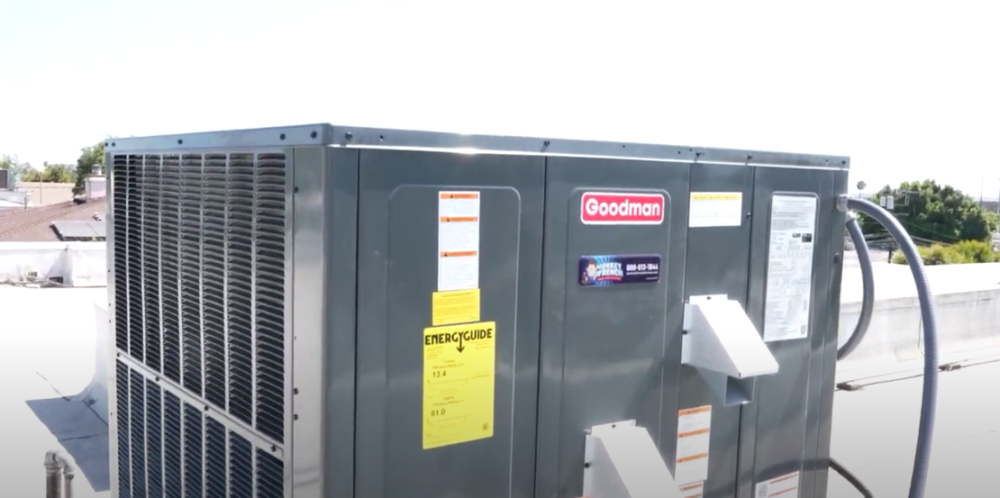
You’ve probably heard HVAC a million times, but what does it mean? Luckily, the answer is a lot simpler than it first appears.
Along with not knowing the definition of HVAC, the components that comprise an HVAC system might also be a mystery to you. Not to worry, the following will touch on the key components that make HVACs tick.
In this article we’ll cover:
- What does HVAC mean
- What makes up an HVAC system
Since 1958 the Monkey Wrench Plumbing, Heating, Air & Electric family has serviced Los Angeles County, taking care of all your HVAC needs, including installs and tune-ups. After so many years in the field, a strong knowledge base develops, and we want to share it with you!
Let’s jump in with a quick definition of HVAC before we get into what makes an HVAC system inside and out so that you can feel confident when speaking with an HVAC technician.
What Does HVAC Mean?
Put simply, HVAC is an acronym for heating, ventilation, air, and conditioning. While the definition is simple, the inner workings of an HVAC system are complex.
HVAC is typically referred to as one solid unit, but these systems are composed of many moving parts that have their unique purposes. Let’s break down what makes an HVAC system.
What Makes up an HVAC System?
HVAC systems are made of several components with individual functions. Despite all of these components coming together to carry out a few key functions like heating and cooling your home, each one operates very differently.
Start by exploring heating and move into cooling as you go.
Furnace
Let’s address furnaces first. A furnace is a part of an HVAC system responsible for generating heat. There are two main types of furnace: gas and electric.
- Gas furnaces utilize natural gas to generate heat and are typically cheaper than electric alternatives.
- Electric furnaces use, you guessed it, electricity. In Southern California, the cost of natural gas is cheaper than electricity, making gas furnaces more desirable.
Whether they’re gas or electric, furnaces can be located in multiple locations within any given home. Some common placements include inside closets, basements, and garages.
Venting
While most HVAC components are well hidden, none of them tuck themselves away quite like venting. A well-designed ventilation system is a must when it comes to heating and cooling.
Every HVAC system relies on venting to carry hot or cold air throughout a home. Without venting, an HVAC system would be ineffective since it would be unable to carry air from room to room.
Fan motor
So, your furnace is generating heat, and your ventilation is set up, but it doesn’t mean anything without a fan motor. Fan motors pull double duty by circulating both hot and cold air produced by your HVAC system.
This component is typically located directly below the furnace. From here, it pushes the hot air generated by the furnace and pushes it through the venting that runs throughout your home.
Similarly, the fan motor also disperses cold air produced by the condenser coil and evaporator coil.
Evaporator coil
While the fan motor is responsible for distributing hot and cold air, the evaporator coil plays a pivotal role in creating cold air to circulate through your home. Evaporator coils sit above the furnace, are made of copper, and work in tandem with the condenser coil to help produce cold air.
In broad strokes, the evaporator coil transforms the refrigerant running through it from a liquid to a gas to ensure it can transfer heat.
More specifically, refrigerant runs through the evaporator coils before passing through an expansion valve. As the refrigerant passes through the expansion valve, the pressure lessens, turning the refrigerant into gas.
Heat is transferred in the coils while the fan motor blows air over the cooled surface, producing cold air. Lastly, the refrigerant circulates back outside to the condenser coil to repeat the cycle.
Condenser coil
The other piece of the air conditioning puzzle is the condenser coil. This component works with the evaporator coil to generate cold air. Condenser coils, which are also made of copper, are located outside your home inside of that familiar-looking square housing you’ve seen a million times.
This component is understandably confused as the whole air conditioning unit when it’s actually one of two main parts that comprise an air conditioner.
Condenser coils are where the gaseous refrigerant produced by the evaporator coil is reverted to a liquid state. During its transition from gas to a liquid, the refrigerant releases its heat. This heat then expels outside. The cycle then restarts as the refrigerant travels back to the evaporator coil.
Wrapping up what makes an HVAC system
To recap, we’ve defined HVAC as heating, ventilation, air, and conditioning. We’ve also explored the inner working of HVAC systems with a look at each major component. With what we’ve discussed today, you’re ready to explore the HVAC world and be confident when speaking with an HVAC technician.
Monkey Wrench Plumbing, Heating, Air & Electric has you covered when it comes to all of your HVAC questions and needs. Visit Monkey Wrench Plumbing, Heating, Air & Electric’s HVAC services page to learn more.
If you’re seriously considering installing an HVAC system, you’ll need to have a grasp of when to get your system a tune-up and how to maintain your system’s efficiency. Both of these best practices will make your life a lot easier in the long run.
